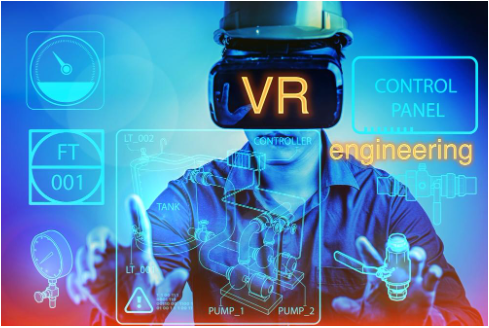Nowadays, most employers are looking for graduates with hands-on skills. That is why, a large number of engineering graduates fail to find suitable job opportunities. Most institutes focus on completing the curriculum. But what about the practical skills that are required to excel in the real world?
This has been an age-old issue. All of a sudden, there came a saviour -immersive engineering techniques. How do these help in providing hands-on training to the students? Are they good substitutes for traditional engineering education? Let’s find out.
What is Immersive Engineering
Immersive engineering refers to the interactive methods of teaching engineering. Earlier, engineering education used to be very rigid and constricted, The students failed to grasp abstract concepts like fluid dynamics, This was because of passively absorbing the knowledge rather than interacting with it. The pupils were not able to visualise the concepts and this would encourage an atmosphere of rote learning.
Immersive engineering involves the inclusion of many elements like gamification tools, visuals, active learning tactics, and even experiential learning. All these factors combine making immersive engineering the go-to method for professors these days.
Let us now look at some of the exact benefits immersive engineering provides to the pupils.
Benefits of Immersive Engineering in Hands-on Learning
When we talk of the benefits of immersive engineering, a few stand out-
1. Real-world applications
Virtual reality labs can mimic real life scenarios. For example, consider a jet fuel engine. When students are learning about a jet fuel engine, they can see the inner workings with the help of VR. They can even understand the hurdles if they work in that sector in the future. This is not possible in traditional classrooms because there are often too many students in the room. Showing how such a huge machine works or functions is not possible to the students individually.
With VR, students can pay a visit to an industrial plant virtually. In real life, such a visit can have dire consequences, Many of the industrial plants emit toxic gases and chemicals. Moreover, these sites are often very prone to accidents and mishaps.
2. Enhanced engagement
It is very difficult to keep a student engrossed in long classroom lectures. The attention span of most kids these days is very limited. When hands-on learning techniques are introduced to the classroom, this is not a hassle anymore. VR learning is very interactive. There are immersive visuals and animations, and all the five senses of the students are engaged. They are fully “immersed” in the learning experience. Hence, the learning outcomes are automatically better.
3. Collaboration and teamwork
Immersive engineering gives the pupils a chance to engage in collaborative teamwork. This is a very important life skill that pays the students in the long run. At their future workplaces, they need to coordinate with different departments and ensure smooth working.
With a VR science lab, the geographical barriers are eliminated. Students can have access to hands-on education whenever they want to. They can learn from the comfort of their homes. They can even collaborate and discuss with learners all over the globe and have interesting cultural exchanges. All these are crucial “soft skills” that are required in the corporate world.
Conclusion
In conclusion, immersive engineering is proving to be a boon in the realm of engineering. Be it showing the inner workings of complex machines or teaching the students while on an industrial tour- there’s nothing VR can’t technically do.
The only question that remains is- how long will the other institutes take to warm up to the idea of VR in education? It’s high time they take a cue from renowned institutes like Harvard, MIT, and Stanford. If we all come together, the day is not far when VR will become the most important supplement to traditional teaching methods.
